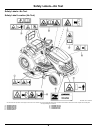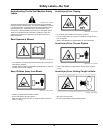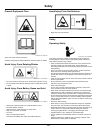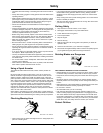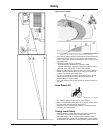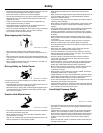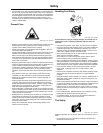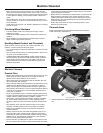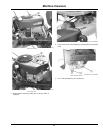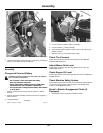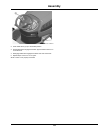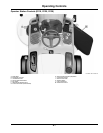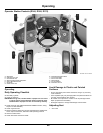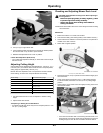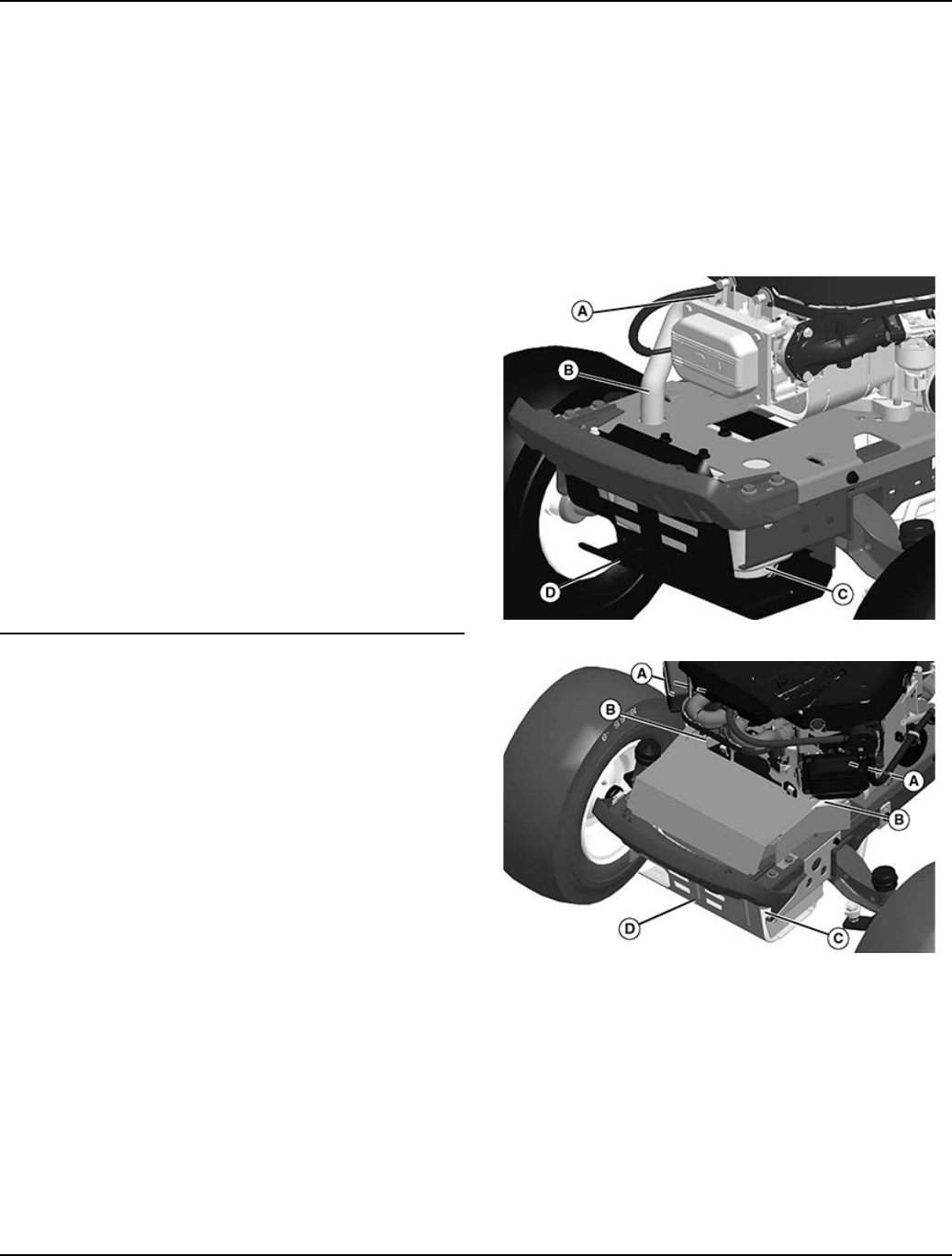
• Always maintain the correct tire pressure. Do not inate the tires
above the recommended pressure. Never weld or heat a wheel and
tire assembly. The heat can cause an increase in air pressure resulting
in a tire explosion. Welding can structurally weaken or deform the
wheel.
• When inating tires, use a clip-on chuck and extension hose long
enough to allow you to stand to one side and NOT in front of or over
the tire assembly.
• Check tires for low pressure, cuts, bubbles, damaged rims or missing
lug bolts and nuts.
Checking Wheel Hardware
• A serious accident could occur causing serious injury if wheel
hardware is not tight.
• Check wheel hardware tightness often during the rst 100 hours of
operation.
• Wheel hardware must be tightened to specied torque using the
proper procedure anytime it is loosened.
Handling Waste Product and Chemicals
Waste products, such as, used oil, fuel, coolant, brake uid, and
batteries, can harm the environment and people:
• Do not use beverage containers for waste uids - someone may drink
from them.
• See your local Recycling Center or authorized dealer to learn how to
recycle or get rid of waste products.
• A Material Safety Data Sheet (MSDS) provides specic details on
chemical products: physical and health hazards, safety procedures,
and emergency response techniques. The seller of the chemical
products used with your machine is responsible for providing the
MSDS for that product.
Machine Cleanout
Prevent Fires
• Besides routine maintenance, one of the best ways to keep your John
Deere equipment running efciently and to reduce re risk is to
regularly remove debris buildup from the machine.
• Please review these recommendations with all operators. See your
John Deere dealer with questions.
• Always follow all safety procedures posted on the machine and in this
operator manual. Before carrying out any inspection or cleaning,
always shut off engine, set parking brake and remove ignition key.
• After operating, allow machine to cool in an open area before cleaning
or storing. Do not park machine near ammable materials such as
wood, cloth or chemicals.
• Empty any grasscatcher bags or containers completely before storing.
• Frequency of these inspections and cleaning will vary depending on a
number of factors including operating conditions, machine
conguration, operating speeds and weather conditions particularly
dry, hot and windy conditions. When you are operating in these
conditions, inspect and clean these areas frequently throughout the
day.
• Wind direction, terrain type and moisture content of surrounding
vegetation can effect where and how much debris accumulates.
• Debris can accumulate anywhere on the machine, especially on
horizontal surfaces.
• Keeping engine area clean will provide the greatest impact on re
prevention. Other areas requiring regular inspection and cleaning
include behind wheel rims, wire harness, hose/line routings, mowing
attachments, etc. Compressed air, leaf blowers or high pressured
water can assist keeping these areas clean.
• Excess lubrication or fuel/oil leaks or spills on the machine can also
serve as collection sites for debris. Prompt machine repair and oil/fuel
cleanup will minimize the potential for debris collection and reduced
cooling throughout machine life.
• Bearing failures or overheating can result in a re. To reduce this risk,
always follow the instructions in the machine operator’s manual
regarding lubrication intervals and locations. Washing the machine
while warm may also reduce bearing life and increase potential for
premature bearing failure.
• Always shut off fuel when storing or transporting machine, if the
machine has a fuel shutoff.
Cleanout Areas
Primary areas that must be inspected and cleaned on the machine
include (See Safety Label Section):
GXAL41967—UN—04MAR13
Single cylinder shown
GXAL41968—UN—04MAR13
Twin cylinder shown
1. Exhaust manifold (A), mufer pipe (B), mufer (C) and mufer shield
(D).
Machine Cleanout
16



